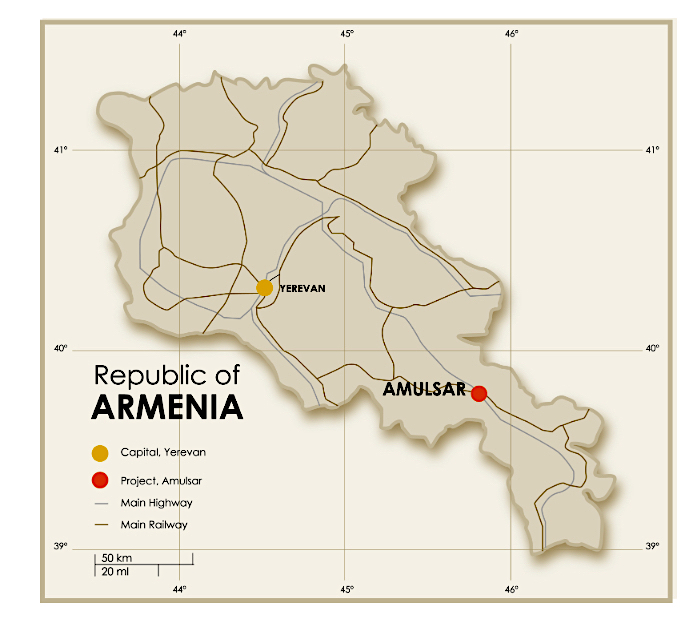Lydian International (TSX:LYD) scored a small victory for its gold project in Armenia after an appeals court rejected a motion to revoke Amulsar’s Environmental Impact Assessment (EIA), approved in April 2016.
A small number of citizens alleged that “new ecological factors” had come to light, which justified voiding the evaluation of the proposed mine’s impacts. The court, however, didn’t find any new issues and dismissed the request.
“We are thankful that the Armenian
Judiciary has confirmed the validity of the EIA,” interim president and CEO,
Edward Sellers, said in a statement. “This Application is yet another example
of the continuing attempts to interfere with Lydian’s legal right to develop
and operate the Amulsar Project.”
A long-running illegal blockade, however, is still preventing access to Lydian’s 75%-finished project, even though Armenia’s highest court of appeal ruled in January that police should intervene.
Locals’ concerns stem mainly from the fact that the Amulsar site sits above a tunnel that supplies water to Lake Sevan, the largest freshwater lake in the whole Caucasus region. Scientists have warned that acidic drainage from the mine would inevitably seep into the lake, posing a threat to Armenia’s water system.

The project is also next to Jermuk, a spa town built around mineral springs, and its economy is based on health tourism. Opponents to the mine claim dust from construction has curbed the influx of visitors and also affected crops and grazing. Cattle, they say, have increasingly refused drinking water from streams on the mountain since construction started, affecting local livelihoods.
Detractors have also argued the mine would threaten several endangered animal species that live in the area, including the world’s rarest big cat, the Caucasian Leopard, of which there are thought to be only 10 left in Armenia.
The conclusions of an independent report published in August, however, suggest
that after taking additional safety measures recommended in the document,
Lydian should be permitted to resume its operations.
Tainted reputation
Opposition to mining in Armenia has
its roots in a long list of environmental disasters caused by previous
operations, as well as in allegations of corruption among authorities in charge
of granting licences.
The country, however, needs foreign
investment and jobs that properly run and managed mining projects could bring
in.
Minerals and metals make up about
half of Armenia’s exports and mining accounted for about 3% of the country’s
economic output in 2017, government data shows.
Lydian foresees Amulsar as a
large-scale operation with annual gold production averaging around 225,000
ounces over an initial 10-year life. Estimated mineral resources contain 3.5
million measured and indicated gold ounces and 1.3 million inferred gold ounces
as outlined in the Q1 2017 technical report.





